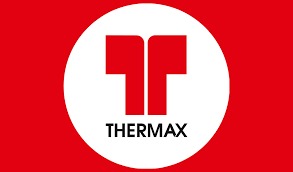@JUDGMENTTAG-ORDER
P.V. Dixit, J.@mdashThis is a reference by the Commissioner of Sales Tax u/s 13 (1) of the Mad by a Bharat Sales Tax Act 1950.''The assessee M/s Bansilal Agarwal and Brothers are dealers in hosiery, fancy goods, electric torch batteries etc. In connection with sale transactions of torch batteries during the period from 7th May, 1950, to 31st March, 1951, the Sales Tax Officer held the assessee liable to pay sales-tax under Item No. 30 of the notification issued on 22-5-1950 u/s 5 of the Act. This item levied sales-tax at the rate of Rs. 6-4-0 per cent on the taxable turnover of electrical goods of every description including bulbs The Sales-tax Officer rejected the contention of the assessee that he was entitled to deduct the amount of sales-tax recovered from the purchaser from the taxable turnover on the ground that the dealer included the amount of sales tax in the sale price and did not recover it separately as required by Rule 51 of the Sales Tax Rules. The assessee repeated these contentions before the Commissioner in a revision-petition filed by him against the assessment order made by the Sales Tax Officer. The said revision-petition was rejected by the Commissioner. In this reference the Commissioner has referred to this Court following questions of law for decision :--
1. Whether sales-tax realised from the purchaser under Rule 51 of the Madhya Bharat Sales Tax Rules by including it in the sale price can be included in the taxable turnover ?
2. Whether the privileges enjoyed by the dealer who collects sales tax separately cannot be enjoyed by the dealer who collects sales tax by including it in the sale price ?
3. Whether battery cells can be regarded as electric goods for the purpose of ITEm No. 30 of the Schedule to the Act published on 22nd May, 1950.
2. The first two questions are fully covered by the answers given in the case of Dhannalal vs. The Commissioner of Sales Tax 1956 MBLJ 1332 wherein similar questions were referred to by the Commissioner of Sales Tax for the decision of the Madhya Bharat High Court. In Dhannalal''s case, the questions were answered thus:--
1. The dealer cannot deduct from the aggregate amount for which the goods are sold, the amount representing the sales tax, unless he has collected it separately as such in addition to the sale price after fulfilling the three conditions laid down in rule 51.
2. The term "taxable turnover" as denned in section 2 (p) of the Act would include the amount of sales tax if the amount is collected by including it in the sale-price. But the amount of sales tax collected separately as such in addition to the sale price in conformity with Rule 51 is not included in the term.
3. The amount of sales tax collected by a dealer by including it in the sale-price is liable to be taxed again.
The answers were based on a consideration of the material provisions of the Act and the rules thereunder and the decision of this Court in Jethalal vs. The State of Madhya Pradesh AIR 1953 Nag 194. Learned counsel for the assessee admitted that the answers formulated in Dhannalal''s case completely dispose of the first two questions referred to in this case. It is therefore, unnecessary for me to repeat here all that has been said in Dhannalal''s case while answering the questions referred to therein.
3. On the third question the argument of Mr. Rege, learned counsel for the assessee was that Item No. 30 in the Schedule of tax issued on 22nd May, 1950, u/s J of the Act as it was worded, did not include torch-batteries and that a torch-battery could not be said to be "electrical goods" and that therefore, no sales-tax could be levied on cells of torch batteries. Learned counsel sought to reinforce his argument by referring to Item No. 16 of Schedule of rate of tax issued on 24th October, 1953, u/s 5 which superseded the earlier Schedule. Item No. 16 is as follows:--
Electrical goods of every description including bulbs, loudspeakers, microphones, torch-cells.
It was said that this Item No. 16 expressly included torch-cells in electrical goods and that this specific addition only indicated that under Item No. 30 of the earlier Schedule torch-cells were not included in "electrical goods." Learned counsel relying on
4. There will be no order as to costs of this reference.
Samvatsar J.
5. I agree.

